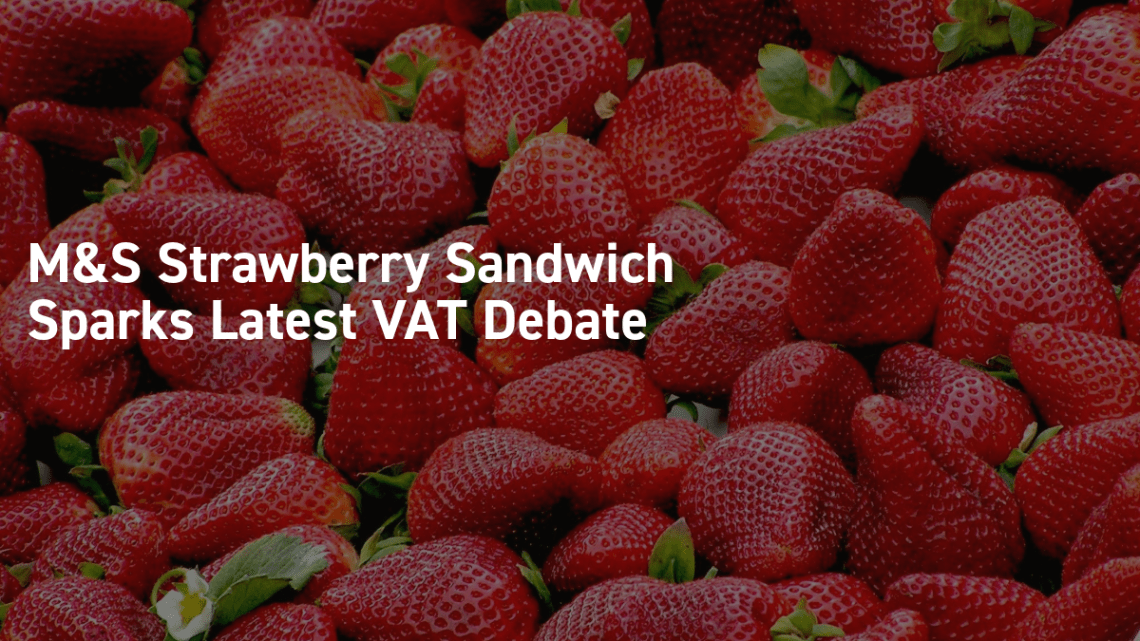
A new addition to the list of unusual food controversies has emerged, as Marks & Spencer’s strawberry sandwich is now at the centre of a VAT debate. The retailer’s viral strawberry sandwich, inspired by the Japanese fruit sando, has become more than just a social media sensation and it’s now at the centre of a complex VAT debate that could determine whether shoppers are unknowingly paying the wrong rate of tax on their snack.
What is the VAT debate?
Although VAT rules on food might appear straightforward, with most food being zero rated, there are key exceptions. One such exception applies to “confectionery, not including cakes or biscuits other than biscuits wholly or partly covered with chocolate or a similar product,” which is subject to the standard 20 percent VAT rate.
This raises the question of whether M&S’ strawberry sandwich counts as confectionery rather than a cake. If deemed as a confectionery product, the sandwich would incur a 20% VAT charge. However, if treated like standard sandwiches, it would be zero-rated.
Confectionary versus cake
The issue lies in understanding what constitutes “confectionery” versus “cake” under VAT legislation. The VAT legislation states that the term “confectionery” includes items such as chocolates, sweets and biscuits as well as “any item of sweetened prepared food which is normally eaten with the fingers.” This legislative amendment has since become a battleground for tax lawyers and tribunal judges, with the M&S strawberry sandwich potentially becoming the latest casualty in Britain’s ongoing debate between food classification and tax collection.
The legislation’s emphasis on finger-eating behaviour has created an interesting legal test that feels almost absurd in practice. If the bread is sweetened and designed to be eaten with fingers, the case for classifying it as confectionery is a strong one. This would automatically trigger the 20% VAT rate, regardless of how the product is marketed or perceived by consumers.
The current legal landscape is further complicated by the ongoing Mega Marshmallow case, which recently went before the Court of Appeal. The case, concerning extra-large marshmallows produced by Innovative Bites, rests on whether these products are normally eaten with the fingers. The Court of Appeal has now returned the case to the First-tier Tribunal, highlighting the difficulty of making such determinations even at the highest judicial levels.
What could M&S’ defence be?
The Court of Appeal’s ruling in the Innovative Bites case established that anything falling within the confectionery definition applies “absent absurdity or the like.” This creates an interesting defence for M&S as is it absurd to consider a product that resembles and is sold as a sandwich as confectionery?
A possible defence lies not in arguing that their product isn’t confectionery, but in claiming it’s a cake. At the moment, cakes are explicitly excluded from the definition of confectionery and subject to 0% VAT. This classification would be favourable for both the retailer and consumers.
The cake argument has historical precedent in the famous 1991 Jaffa Cakes case, where McVitie’s successfully argued that their product was a cake rather than a biscuit, thereby avoiding the 20% VAT rate applied to chocolate-covered biscuits. HMRC’s own guidance states that cakes are “often made from a thin batter containing flour and eggs, and aerated in the process of cooking,” and include “sponge cakes, fruit cakes, pastries, éclairs, meringues and jaffa cakes.”
For M&S, the strawberry sandwich’s ingredients of sweetened bread, cream filling, and fresh fruit could be argued to constitute a cake. While the current sandwich format presents challenges, the sweetened bread base could potentially fall within this definition.
Are VAT reforms needed?
The M&S strawberry sandwich controversy illustrates some of the broader challenges with the UK’s VAT system when applied to food and beverages. The existing framework, filled with exceptions and interpretive guidance can create confusion and uncertainty for both businesses and consumers.
The result is a landscape where businesses must navigate increasingly complex regulations, often requiring expert legal advice to determine the correct VAT rate for new products. For companies bringing new food and beverage products to market, this uncertainty represents both a financial risk and a possible barrier to innovation.
Looking ahead
Whether M&S and HMRC will ultimately contest the matter before a tribunal remains to be seen. The retailer has not commented on the VAT rate being applied to the product, and HMRC has similarly remained silent on any potential investigation. However, the growing attention from VAT professionals and the product’s continued popularity make a legal challenge a real possibility.
We’d love to hear from you. To book an appointment or to find out more about our services: